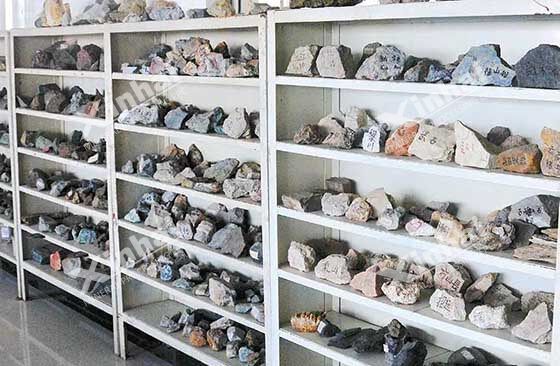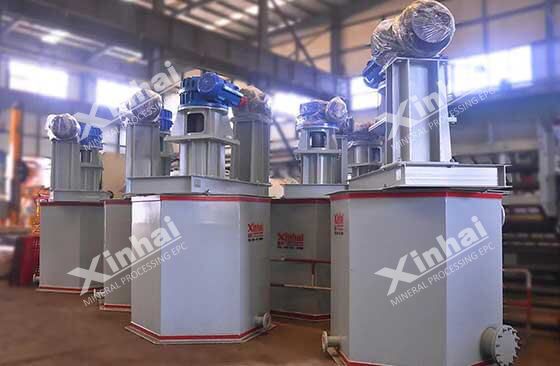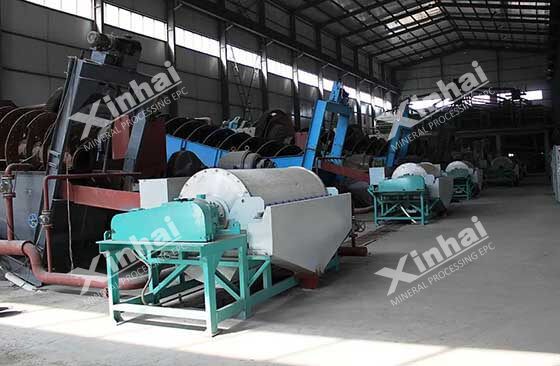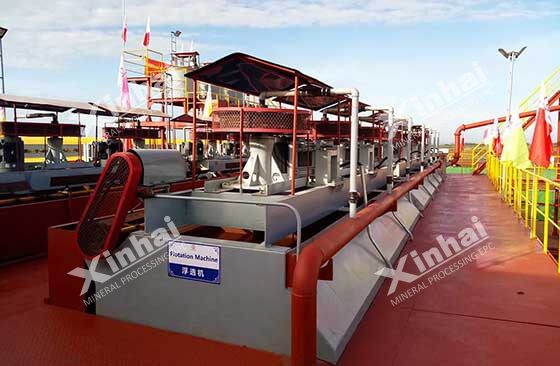
Quartz sand is a non-metallic mineral with a wide range of applications in traditional fields such as glass products, building materials, waterproof and anti-corrosion materials, and high-tech industrial fields such as electronic materials, optical fiber communication, SiO2 thin film materials, etc. The high-tech industry is an emerging industry with high development prospects, but this field is very demanding on the purity of quartz sand, generally requiring SiO2 content greater than 99.99%, and impurities, especially iron impurities are limited to a very low range, so It is necessary to remove iron from quartz sand.
At present, common quartz sand iron removal methods include mechanical scrubbing, magnetic separation, froth flotation, and acid leaching.

The mechanical scrubbing method is mainly with the help of mechanical external force and the collision and friction between minerals to remove the thin film iron on the surface of quartz sand and the iron-containing minerals adhering to the surface of quartz sand. There are two scrubbing methods, one is the mechanical scrubbing method and the other is the rod grinding scrubbing method.
General quartz sand scrubbing concentration between 50% to 60% effect is appropriate, the scrubbing time (in principle) is based on the initial product quality requirements, and it should not be too long, otherwise, it will cause excessive wear and tear of the equipment.

This method requires high-efficiency and strong scrubbing with dosing, with reasonable process and equipment, and the effect is good. The agent can increase the electric repulsion between the impurity ore and the quartz surface, thereby strengthening the separation between the two.
This iron removal method can make the final product meet the quality requirements of float glass for high quality silica sand with good quality and high yield.
Quartz is a non-magnetic mineral that is not easily magnetized in a magnetic field. Most of the iron impurities (hematite, magnetite, limonite, goethite, etc.) are magnetic minerals that can be magnetized. Therefore, the magnetic separation method removes these iron impurity minerals in the quartz sand according to the magnetic difference.
Quartz sand magnetic separation iron removal method can be divided into wet magnetic separation and dry magnetic separation.
Weak magnetic minerals (such as hematite, limonite, and biotite, etc.) can use a wet strong magnetic separator of more than 10,000 oersteds, which can remove impurities (including conjoined bodies) to the greatest extent possible, the more times of magnetic separation, the finer the quartz sand particle size, the better the effect.
However, the wet magnetic separator has large power consumption, easy wear and tear, high cost, and large water consumption in the production process.
For strong magnetic iron ore (magnetite), it is suitable to use a weak magnetic machine or a medium magnetic machine to remove impurities.

The dry magnetic separation method mostly uses a dry magnetic separator for impurity removal, its operation is convenient, operation and maintenance costs are lower than the wet magnetic separator.
The quartz sand froth flotation iron removal uses hydrofluoric acid as the activator and uses amine cationic collectors for flotation under strong acid conditions (pH 2-3). Quartz activated by metal ions can be inhibited by NaOH during iron flotation. The methods can be divided into fluorine and acid method, fluorine-free acid method, and fluorine-free and acid-free method.
The method is easy to control, has a good flotation effect and stable flotation index, but the presence of fluoride ions has caused great damage to the surrounding land and environment.
The method has a stable production index and no harm to the surrounding land and environment, but the requirements for a flotation machine are high because of strong acid and corrosiveness.
The method is to create a uniquely high concentration pulp flotation environment under natural PH conditions through the reasonable deployment of the anionic and cationic collectors to achieve the purpose of preferential flotation of impurity minerals. However, this method has high requirements for raw quartz sand and pulp environment and is not widely used at present.

Quartz sand is insoluble in acid (except hydrogen fluoride), while minerals containing iron impurities can be dissolved by acid, based on this feature, the acid leaching method can effectively remove iron impurities from quartz sand. In addition, non-metallic impurities in quartz can also be removed. The common acids used in the acid leaching method are sulfuric acid, hydrochloric acid, nitric acid, and hydrofluoric acid.
Generally, the harmful components present in quartz sand are in the form of mineral aggregates, so the effect of single acid leaching is not good, and the mixed acid leaching method is mostly used.
It should be noted that the ratio of various acids, the order of addition, temperature, acid leaching time, mineral size, and the uniformity of slurry stirring will have a significant impact on the removal of impurity minerals.
The above are several common quartz sand iron removal methods, as well as microbial methods, ultrasonic methods, etc. No matter which iron removal method is used, it needs to be determined according to multiple factors such as the properties of quartz sand ore, conditions of concentrators, and investment budget. Therefore, if you want to choose the iron removal process suitable for your own quartz sand processing plant, you need to carry out beneficiation tests and choose the suitable iron removal process through the experimental results in order to obtain the ideal technical and economic benefits.
To find out more about our products and solutions, please fill out the form below and one of our experts will get back to you shortly.